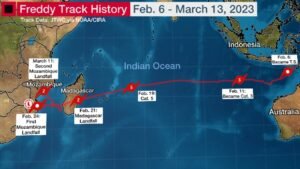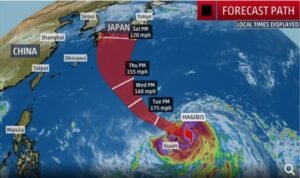
My Courses
Past Exam Question Papers | ATPs | Notes | University Guides
About My Courses: Past Exam Papers | Universities Courses Guide
The My Courses portal serves as a comprehensive educational resource for students, teachers, and career seekers in South Africa. This all-encompassing platform offers a wealth of information, ranging from past exam question papers, university course prospectus (course aps score requirements), and career guidance to a curated list of courses available at colleges, universities, and schools. Whether you’re a student in primary or secondary school, attending a TVET college, or enrolled in a university or private college, the portal has something for you. It provides past exam papers complete with memorandums, making it an invaluable tool for exam preparation. Some of the learning content is also provided by Distinction Pass.
Find Exam Papers and Notes by Subject
Grade 12
- Accounting Grade 12
- Agricultural Management Practices Grade 12
- Agricultural Sciences Grade 12
- Agricultural Technology Grade 12
- Business Studies Grade 12
- Civil Technology Grade 12
- Computer Applications Technology Grade 12
- Consumer Studies Grade 12
- Dance Studies Grade 12
- Design Grade 12
- Dramatic Arts Grade 12
- Economics Grade 12
- Electrical Technology Grade 12
- Engineering Graphics and Designs Grade 12
- Geography Grade 12
- History Grade 12
- Hospitality Grade 12
- Information Technology Grade 12
- Life Orientation Grade 12
- Life Sciences Grade 12
- Mathematical Literacy Grade 12
- Mathematics Grade 12
- Mechanical Technology Grade 12
- Music Grade 12
- Physical Science Grade 12
- Religion Studies Grade 12
- Technical Mathematics Grade 12
- Technical Sciences Grade 12
- Tourism Grade 12
- Visual Arts Grade 12
Language:
- Afrikaans HL FAL SAL Grade 12
- English HL FAL SAL Grade 12
- IsiNdebele HL FAL SAL Grade 12
- IsiXhosa HL FAL SAL Grade 12
- IsiZulu HL FAL SAL Grade 12
- Sepedi HL FAL SAL Grade 12
- Sesotho HL FAL SAL Grade 12
- Setswana HL FAL SAL Grade 12
- Siswati HL FAL SAL Grade 12
- Tshivenda HL FAL SAL Grade 12
- Xitsonga HL FAL SAL Grade 12
Grade 11
- Accounting Grade 11
- Agricultural Management Practices Grade 11
- Agricultural Sciences Grade 11
- Agricultural Technology Grade 11
- Business Studies Grade 11
- Civil Technology Grade 11
- Computer Application Technology Grade 11
- Computer Literacy Grade 11
- Consumer Studies Grade 11
- Dance Studies Grade 11
- Design Grade 11
- Economics Grade 11
- Electrical Technology Grade 11
- Engineering Graphic and Design Grade 11
- Geography Grade 11
- History Grade 11
- Hospitality Grade 11
- Information Technology (IT) Grade 11
- Life Orientation Grade 11
- Life Sciences Grade 11
- Mathematical Literacy Grade 11
- Mathematics Grade 11
- Mechanical Technology Grade 11
- Music Grade 11
- Physical Sciences Grade 11
- Religion Studies Grade 11
- Technical Mathematics Grade 11
- Technical Sciences Grade 11
- Tourism Grade 11
- Visual Arts Grade 11
Language:
- Afrikaans HL FAL SAL Grade 11
- English HL FAL SAL Grade 11
- IsiNdebele Grade 11
- IsiXhosa Home Language Grade 11
- IsiZulu Home Language Grade 11
- Sepedi HL FAL SAL Grade 11
- Sesotho Grade 11
- Siswati Home Language Grade 11
- Setswana Home Language Grade 11
- Tshivenda HL FAL SAL Grade 11
- Xitsonga Home Language Grade 11
Grade 10
- Accounting Grade 10
- Agricultural Management Practices Grade 10
- Agricultural Sciences Grade 10
- Agricultural Technology Grade 10
- Business Studies Grade 10
- Civil Technology Grade 10
- Computer Application Technology Grade 10
- Consumer Studies Grade 10
- Dance Studies Grade 10
- Design Grade 10
- Economics Grade 10
- Electrical Technology Grade 10
- Engineering Graphic and Design Grade 10
- Geography Grade 10
- History Grade 10
- Hospitality Studies Grade 10
- Information Technology (IT) Grade 10
- Life Orientation Grade 10
- Life Sciences Grade 10
- Mathematical Literacy Grade 10
- Mathematics Grade 10
- Mechanical Technology Grade 10
- Music Grade 10
- Physical Sciences Grade 10
- Religion Studies Grade 10
- Technical Mathematics Grade 10
- Technical Sciences Grade 10
- Tourism Grade 10
Language:
- Afrikaans HL FAL SAL Grade 10
- English HL FAL SAL Grade 10
- IsiNdebele Grade 10
- IsiXhosa Home Language Grade 10
- IsiZulu Home Language Grade 10
- Sepedi HL FAL SAL Grade 10
- Sesotho Grade 10
- Siswati Home Language Grade 10
- Setswana Home Language Grade 10
- Tshivenda HL FAL SAL Grade 10
- Xitsonga Home Language Grade 10
Updates
Latest
Find Courses To Study
- Accounting Courses
- Agriculture Courses
- Architecture Courses
- Bookkeeping Courses
- Business Management Courses
- Criminology Courses
- Dermatology Courses
- Drama and acting Courses
- Teaching Courses
- Engineering Courses
- Fashion Design Courses
- Forensic Courses
- Graphics and Communications Design Courses
- Human Resources Courses
- Industrial Psychology Courses
- Information Technology Courses
- Interior Design Courses
- Law Courses
- Marketing Courses
- Mechanical Engineering Courses
- Medical Courses
- Nail Technician Courses
- Nursing Courses
- Paramedic Courses
- Pharmacy Courses
- Physiotherapy Courses
- Pilot aviation Courses
- Psychology Courses
- Robotics Courses
- Safety and Security Courses
- Social Sciences Courses
- Social Worker Courses
- Software Engineering Courses
- Sound Engineering and Music Production Courses
- Sport Sciences Courses
- Supply chain management Courses








